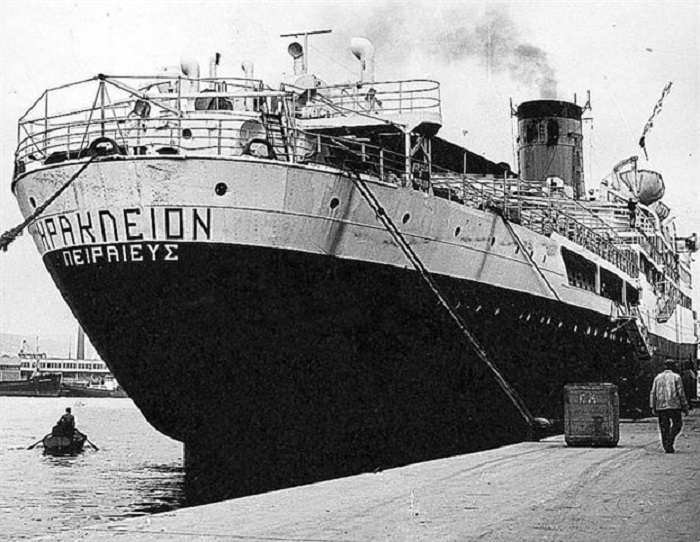
Two major disasters hit the city of Chania in Crete on December 8th in the space of only three years, with the loss of more than three hundred lives.
On December 8, 1966, a ferry on the Chania-Piraeus route sank off the rocky islet of Falkonera. More than two hundred people were killed in one of the worst naval disasters in modern Greek history.
Ferry was destined for Piraeus
The ferryboat “Heraklion” sailed from Souda Bay, Crete to the port of Piraeus with a crew of 73 and 191 passengers on board at 8:00 pm on Dec. 7, 1966. Gale force winds of 9 Beaufort magnitude were blowing at the time.
At around 2:00 AM, almost halfway through the voyage and while sailing south of the small rocky island of Falkonera, a refrigerator truck carrying oranges that was loosely secured started banging into one of the gigantic loading doors of the ferry.
The door eventually opened and the truck plummeted into the sea, allowing seawater to flood the ship’s holds. It took just fifteen to twenty minutes for the vessel to capsize.
It was at 2:06 AM on Thursday, December 8, 1966, when the distress signal “SOS from Heraklion at 36° 52′ N 24° 08′ E sounded. “We are sinking” was the message sent out. The ferryboat was soon gone, taking 217 passengers and crew members with it. Only thirty passengers and sixteen crew members were rescued.

Air disaster hits Crete on the same day three years later
On the very same day just three years later, eighty-five passengers and crew members were killed when a plane on a route between Chania and Athens crashed into a mountainous area of Keratea, Attica.
While on its way to Athens, with its undercarriage retracted, the aircraft struck Mount Paneio at an altitude of approximately two thousand feet. This was due to inclement weather, consisting of rain and high winds.
The crash of Flight 954 was the deadliest aviation accident in Greek history at the time it took place, and this remained so until the crash of Helios Airways’ Flight 522 nearly thirty-six years later.
It is still the deadliest aviation accident involving a Douglas DC-6 and the most fatal crash in the history of Olympic Airways.
It is not surprising that in the aftermath of the second disaster, the municipal council of Chania declared December 8th as a “Cursed Day” for the town.
See all the latest news from Greece and the world at Greekreporter.com. Contact our newsroom to report an update or send your story, photos and videos. Follow GR on Google News and subscribe here to our daily email!



